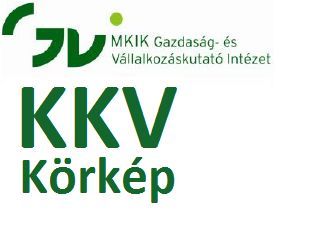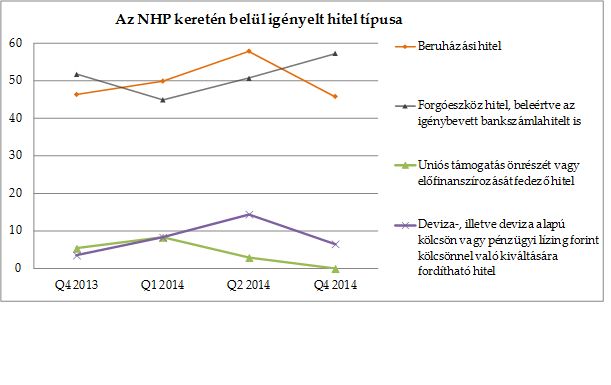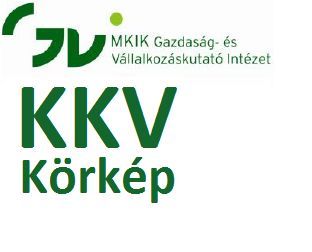- Research fields
- Further Research Areas
- Research year
- Related documents
The HCCI Institute for Economic and Enterprise Research (IEER) business climate survey in April 2015 shows that the level of business confidence in Hungary continued to improve compared to that seen in the previous quarter. The IEER Quarterly Business Climate Index has risen from the January level of 16 to 23 points. The current level is the highest since the beginning of the research (January 2005). The current level of the indicator is higher than it was one year earlier. The Uncertainty Index level is at a current level of 38 points, which is three points higher than the level in January; this indicates increase in uncertainty. The current level is the same as the value recorded one year before and higher than the value recorded two years before (in April 2013 it was 37 points). In addition, the value of the Uncertainty Index indicates that the current trend is not uniform within the private sector, and that the recovery will continue to be confined to one part of the economy and will not be felt by all companies.
Read more >>>According to the results of the IEER Business Climate Survey,further positive changes can be expected in the business climate of the Hungarian companies.The IEER Business Climate Index rose to +42 points in April 2015 from +34 points in October 2014.The increase in the IEER Business Climate Index is due to the fact that all primary indicators are higher than in the previous period.
Read more >>>In the following analysis we examine how domestic businesses assessed various institutions and public offices in terms of efficiency and quality of the services they provide. The analysis is based on the October 2010, July 2014 and January 2015 business climate surveys of the Institute for Economic and Enterprise Research (IEER). The businesses surveyed believe that in January 2015 the land registry office functioned the most efficiently and the services they provided were of the highest quality; the lowest ratings were given to hospitals. Among educational institutions colleges and universities were rated best by companies, the worst were vocational schools. Among the periods examined, companies evaluated institutions most positively in July 2014. After this the views of businesses typically worsened, and the results of January 2015 have fallen back to 2010 levels.
Read more >>>Within the framework of the SME Outlook research, since January 2005 the HCCI Institute for Economic and Enterprise Research (IEER) conducts a quarterly analysis of the situation of small and medium sized enterprises, their short-term prospects, as well as the economic and institutional factors affecting this business group. For this project a total of 300 companies operating within the fields of manufacturing, construction and services are surveyed and the data is analysed in every quarter. The structure of the sample remains the same from quarter to quarter, with the companies surveyed representing the economic performance and sector distribution of small and medium sized enterprises in Hungary.
On June 1, 2013, the National Bank of Hungary (NBH) announced the Funding for Growth Scheme (FGS; in Hungarian: Növekedési Hitelprogram - NHP), the aim of the program was to support small and medium-sized enterprises in accessing forint- denominated loans, to strengthen financial stability, and to reduce external vulnerability of the Hungarian economy. The FGS consists of three pillars. Under the fist pillar the NBH provided collateralized refinancing loans to its monetary policy counterparties up to a total amount of HUF 425 billion. Under the second pillar the NBH provided refinancing loans to convert foreign currency loans of small and medium-sized enterprises into forint loans up to a total amount of HUF 325 billion. (Under the third pillar the NBH helped credit institutions to reduce their external foreign currency liabilities via FX swaps).
In this report we present the results of four SME Outlook quarterly surveys (October 2013, January 2014, April 2014 and October 2014), which covers in totally 1505 small and medium sized enterprises. In those quarterly SME Outlook surveys the leaders of small and medium-sized enterprises were asked about bank loans and the FGS by the HCCI Institute for Economic and Enterprise Research (IEER).
The results show that nearly 60% of small and medium-sized enterprises had some form of bank loan. The most common type of credits was working capital loan (including bank loans) during each survey period. Results show that companies that export a maximum of 50% of their whole production were the most likely to have a loan, as well as companies with expectation of investment change.
During the four waves of the survey companies hold mostly forint-denominated loans and around 30% of companies had a euro-based loan. Euro-based loan was mainly used by export-oriented companies, manufacture sector companies and medium-sized companies.
Generally every fifth SME applied for loan under the FGS. Over all periods of the survey, investment loans and working capital loans were the most demanded. More and more companies with positive opinion about current business situation were willing to apply for loan under the FGS, while companies with negative opinion were less likely to do so.
Read more >>>The joint empirical research of the National Labor Office (NLO) and HCCI Institute for Economic and Enterprise Research (IEER) on the short-term economic outlook and labor market decisions of private sector firms was conducted for the eighth time in September and October 2014. For the latest survey of the Short-term Labor Market Forecast the staff of NLO and IEER interviewed the managers of 7,179 firms about their current and expected demand for labor.
According to the data the Hungarian economy did not reach its pre-crisis level at the end of last year despite the fact that 2014 generated a GDP growth which had not been seen in a long time. The engine of Hungarian industrial growth continued to be industrial exports, especially exports to Germany.
Based on the results of employee number changes, the employment rate has steadily increased in 2014. The number of employees in the private sector has increased in the first and second quarters by 2.3 and 2.8 percent respectively. According to the forecast of IEER, based on the expectations for 2015, the employment index is expected to stagnate. The likely scenario is that in 2015 the number of employees may increase by 1.3 percentage point for the construction sector and 0.9 percentage point for retail. In contrast, a 7.5 percentage point decrease is expected for services while a 9.3 percentage point decline is likely for mainly exporting firms.
Read more >>>Within the framework of the “SME Outlook” research, since January 2005 the HCCI Institute for Economic and Enterprise Research (IEER) conducts a quarterly analysis of the situation of small and medium sized enterprises, their short-term prospects, as well as the economic and institutional factors affecting this business group. For this project a total of 300 companies operating within the fields of manufacturing, construction and services are surveyed and the data is analysed in every quarter. The structure of the sample remains the same from quarter to quarter, with the companies surveyed representing the economic performance and sector distribution of small and medium sized enterprises in Hungary.
On June 1, 2013, the National Bank of Hungary launched the Loans for Growth Program (NHP), albeit the details of the program had been known several months earlier. For the October 2014 SME Outlook survey the leaders of small and medium-sized enterprises were asked about bank loans and the NHP Program by the IEER.
The results show that 56% of small and medium-sized enterprises have some form of bank loan. The most common type of credit is working capital loan (including bank loans). Companies hold mostly forint-denominated loans.
Euro-based loan is the most common foreign currency loan and mainly used by export-oriented companies, companies in the manufacturing sector and medium-sized firms.
Every fifth company among SMEs have applied for loan under the Loans for Growth Program (NHP). More than half of the companies were interested in working capital loans. Every second company applied for a loan up to 50 million forints. The overall opinion of SMEs is that there are no major changes in the terms of access to loans during the period 2013 and 2014.
Read more >>>Within the framework of the “SME Outlook” research, since January 2005 the HCCI Institute for Economic and Enterprise Research (IEER) conducts a quarterly analysis of the situation of small and medium sized enterprises, their short-term prospects, as well as the economic and institutional factors affecting this business group. For this project a total of 300 companies operating within the fields of manufacturing, construction and services are surveyed and the data is analysed in every quarter. The structure of the sample remains the same from quarter to quarter, with the companies surveyed representing the economic performance and sector distribution of small and medium sized enterprises in Hungary.
On June 1, 2013, the National Bank of Hungary launched the Loans for Growth Program (NHP), albeit the details of the program had been known several months earlier. For the October 2014 SME Outlook survey the leaders of small and medium-sized enterprises were asked about bank loans and the NHP Program by the IEER.
The results show that 56% of small and medium-sized enterprises have some form of bank loan. The most common type of credit is working capital loan (including bank loans). Companies hold mostly forint-denominated loans.
Euro-based loan is the most common foreign currency loan and mainly used by export-oriented companies, companies in the manufacturing sector and medium-sized firms.
Every fifth company among SMEs have applied for loan under the Loans for Growth Program (NHP). More than half of the companies were interested in working capital loans. Every second company applied for a loan up to 50 million forints. The overall opinion of SMEs is that there are no major changes in the terms of access to loans during the period 2013 and 2014.
Read more >>>Results of the IEER Quarterly Business Climate Survey January 2015
The 2015 IEER Quarterly Business Climate Survey showed that the level of business confidence in Hungary significantly improved compared to the previous quarter. The IEER Quarterly Business Climate indicator rose from 10 points to 19 points. This value is much higher than the one measured in last year in January (8 points). The value of Uncertainty index stands at a 35-point level, which conforms to the value in October. This result shows a stagnation in the level of uncertainty. The 35-point level is higher than the value of the index last year (it stood at 32 points in January 2014). The value of the uncertainty indicator suggests that the current tendency is not universal and that it only concerns a part of the business community.
Read more >>>Results of the IEER SME Outlook Survey January 2015
The HCCI Institute for Economic and Enterprise Research (IEER) SME Outlook business climate survey in January 2015 shows that after the decline observed in the previous quarter the level of business confidence improved again. The Business Climate Index rose to 16 points from the 9 points measured in October. The index is also higher than it was in last January (9 points). The Uncertainty Index is at 35 points level, which is one point lower than its value in October, so the uncertainty seems to stagnate. The 35 points level is slightly higher than the level measured last year (33 points in January 2014), but lower than the level measured two years ago (41 points in January, 2013). The value of the Uncertainty Index suggests that the current tendency is not universal and that it only concerns a part of the business community, others do not perceive it yet.
Read more >>>The following brief analysis examines what factors local businesses consider as their performance and success. The analysis was based on the database of the IEER April 2014 Business Climate Survey, which is Hungary’s largest company-wide survey of its kind. The April survey is based on the responses of 2,606 company executives. The sample was made up of 58% micro enterprises (less than 10 people), 17% of small businesses (between 10-49 persons), 16% of medium-sized enterprises (between 50-249 persons), and 10% of large enterprises (250 persons and above). Thus, our study primarily applies to micro-enterprises.
Our results show that the majority of domestic enterprises are proud of the positive characteristics (e.g. quality, uniqueness) of their products and services. The second most common response was that entrepreneurs considered the very survival of their company as a major success. A majority of respondents were proud that they managed to retain customers or attract new ones, and the fact that customers were satisfied with their work. Nearly one in ten respondents pointed out that they managed to maintain or increase staff numbers. Also, nearly one-tenth of interviewees viewed as one of their major achievements the fact that revenue remained the same or even increased.
Read more >>>






